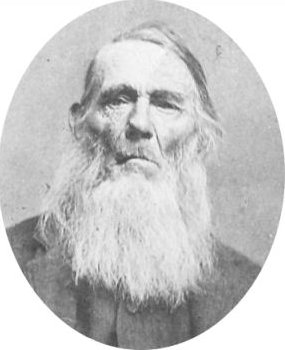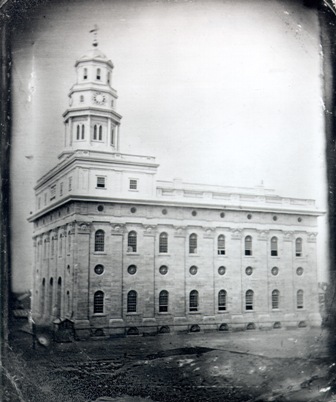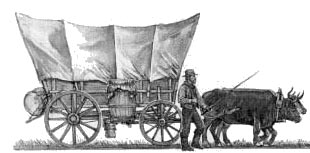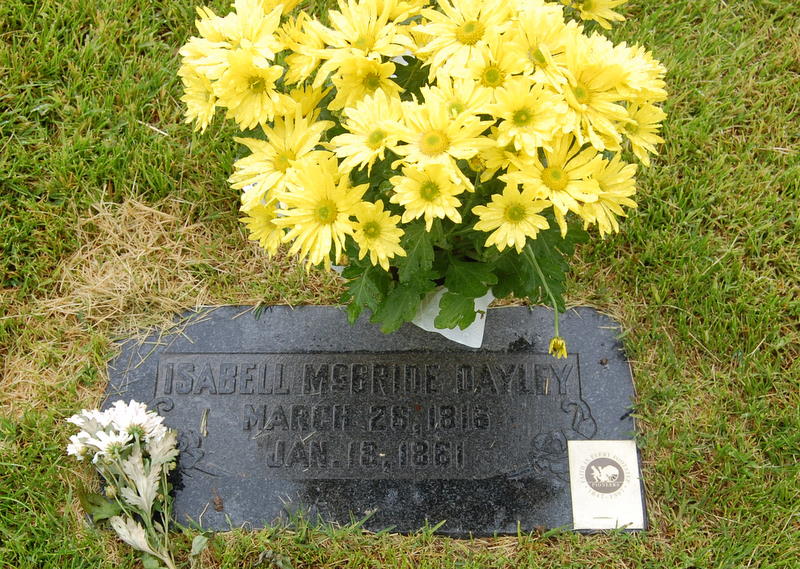Isabelle McBride
Pioneer
women deserve more credit than they are given for the role that they
played in the hardships of those times. They were as brave and
courageous as any man. After all, when their men were discouraged and
overwhelmed with the burdens with which they where faced, it was
their wives to who they turned, and it was these women who encouraged
them on. These pioneer women were right there every step of the way,
laboring beside them in the arduous task at hand, often while with
child.

They faced great sorrow and adversity. They had babies ripped from their breast or torn from the grasp of their hand by death. Many were widowed at a young age. They witnessed things that no woman should see as they endured the brutality of heartless mobs. Many died young in childbirth or from lingering illness. For many, we can only imagine what their angelic faces looked like, whether smooth with youth or lined with age. One of these valiant pioneer women was Isabelle McBride Dayley.
Isabelle McBride was born March 28, 1816 at Lancaster, Fairfield County, Ohio. Her parents were Thomas White McBride and Catherine John. She was the thirteenth child out of a family of fifteen children. Five died in infancy or childhood.
When four years of age, in March of 1820 her family moved from Fairfield County to Wayne County, Ohio situated on the tributaries of the Mohegan River, called the Red Haw where her father leased some property. Her father's circumstances were very poor. She along with every member of the family worked hard at clearing the land, her young hands were put to gathering brush.
The first sermon preached on the Red Haw, by the Elders of the Church of Jesus Christ of Latter-Day-Saints was preached in her father's house by Elders Thomas Tripp and Harvey Green in April 1831. Soon after, her father, mother, and Isabelle were baptized and confirmed members of the church by the same elders.
In about 1832, at the age of 16 Isabelle married Enoch Rhodes of Lancaster, Fairfield County, Ohio. Enoch was born in 1810, the son of Abram Rhodes and Elizabeth Barbara Baker He died soon after he and Isabelle were married.
In August of 1833 her father sold the lease on their property and started for Jackson County, Missouri to be with the Church. Being late in the season, they were unable to go any further then Richland County, Ohio.
In
Richland she met and married James Dayley on March 13, 1834. She, was
18 years of age, and James was 23. James was born on March 26, 1811
at Little Pigeon Roost, Belmont County, Ohio to Jacob Dayley and
Elizabeth Barbara Baker. James was a half brother to Enoch Rhodes,
Isabelle's first husband. 
In the spring of 1835 James and Isabelle, along with her parents and their younger children started for Jackson County, Missouri, to join with the Saints. They were accompanied by Isabelle's brothers; James, Amos, and Thomas McBride and their families and her sister, Elizabeth and her husband James McMillen and their family. They traveled for about two months with teams and wagons and arrived in Pike County, Missouri, in the latter part of June. The Church was very much scattered and unsettled, so they remained in Pike County for about a year. While living in Pike County James' and Isabelle's first child, Elizabeth, was born on April 14, 1835. She only lived six months and died on October 20, 1835.
In the spring of 1836, the McBride Family went to Ray County, Missouri and there joined with the Church. They suffered with ague and fever. In September, James and Isabelle, her parents, and siblings and their families moved to Caldwell County, Missouri, and settled about three-fourths of a mile from Haun's Mill on Shoal Creek, about twelve miles due east of Far West. A branch of the Church was organized at Haun's Mill, presided over by David Evans.
It was at Grand River, Caldwell County, Missouri that James' and Isabelle's son, Encoh Rhodes Dayley was born on September 19, 1837. He was named after James' half brother and Isabelle's first husband.
One beautiful afternoon, on October 30, 1838 an angry mob of 250 armed men approached the settlement of Haun's Mill and began firing at all who were there. Not more than six minutes had passed from the firing of the first shot until the massacre was over. Isabelle's father was shot with his own gun and his body was badly mutilated. Her husband, James, her brother James McBride, and three other men escaped by running from the mill across the mill dam into a field while being shot at. Isabelle and her one year old son, Enoch, along with other women and children hid nearby in the willows along the stream.
A few rods south of the blacksmith shop was an unfinished well about eight to twelve feet deep, with no water in it. James, Isabelle's brother Amos McBride, and another man, Jacob Myers, were the only able-bodied men available to bury the dead. They carried the bodies of the seventeen victims, one at a time, on a board and dropped them into the well and covered them with dirt to protect them from the herd of hogs the mob was bringing in. James dedicated the well as a grave. James and two other men were taken prisoner and were tormented and harassed for a few days and then set at liberty. James had been severely beaten.
On
February 24, 1839, James and Isabelle gave up their home at Haun's
Mill and started for Nauvoo, Illinois. With them were her widowed
mother, Catherine John McBride, along with her brothers Amos and
James McBride, and another young man, Harrison Severe. In all, their
party numbered about thirteen persons. They set out with a team of
horses pulling a wagon and a yoke of oxen pulling a two-wheeled
cart. The first day, they traveled about nine miles and camped that
night in a house that had been vacated by one of the brethren. It was
extremely cold.

The Haun's Mill Massacre - painting by C.C.A. Christensen. In the left center,
just behind the covered wagon, is a depiction of the murder of Thomas White McBride.
While camped there, they were informed that the guns the mob had taken from them had been taken to Richmond, in Ray County, and they could get them back by describing them. James and Isabelle's brother, James McBride, left the next morning for Richmond, traveling on foot, as no teams were going in their direction. The rest of the family traveled on and after five or six days James and James caught up with them. They were able to retrieve all of the guns, except to her father's.
After a tedious journey and a great deal of exposure, the company arrived in Adams County, Illinois. While at Payson, Adams County, Illinois, James' and Isabelle's third child, Issac Moreley, was born on January 8, 1840.
Around the last of April in 1840 James and Isabelle and their company arrived in Nauvoo, Illinois. While living in Nauvoo, two more children were born, Sarah Ann on October 26, 1841 and George on January 3, 1844.
Isabelle
had much pain and heartache in Nauvoo, her mother was taken with
Kings Evil (lymphadenitis of the cervical lymph nodes associated with tuberculosis),
from which she died on July 27, 1841 at the age of sixty three.
Isabelle went through much persecution and mourned the death of the
Prophet Joseph Smith and Patriarch Hyrum Smith who were murdered at
Carthage Jail on the June 27, 1844. In December of 1844 her eleven
month old son, George died. While still in grief over this loss, 3½
year old Sarah Ann died on March 24, 1845 in Nauvoo. In the fall of
1845 the emptiness of her losses were eased with the joy of the birth
of Heber Chase Dayley on September 5, 1845 in Nauvoo.
The Nauvoo Temple - 1846
During the winter of 1845 and 1846 Brigham Young and the Apostles began making plans and preparations to evacuate Nauvoo the following spring. Despite the fact, work continued on the Nauvoo temple in order to complete it before leaving. In February the temple was completed and the decision was made to begin the exodus earlier than planned. Isabelle and James received their endowments in the Nauvoo Temple on February 6, 1846.
As the Saints were again driven from their homes, the Dayleys left Nauvoo in April 1846 along with the families of Isabelle's siblings, directing their course westward. They all loaded what they could take with them and left with a span of horses of very inferior quality pulling a small wagon, and a yoke of oxen pulling another wagon.
The first day, they moved to the banks of the Mississippi River where they unloaded everything at the river. Then with the teams they returned to Nauvoo for another load. By evening the family was all together again. This was the way they traveled each day – hauling everything in two trips. They only traveled about twenty-five miles in ten days, camping together every night.
They stopped at Farmington, Van Buren County, Iowa. There the company took a job of clearing land during the summer. Their wages was about twenty-five cents per day, each.
About
the first of March 1847, Isabelle's brother Thomas went to town and
while peaceable sitting there in the store, he was seized by a mob,
and hanged from the porch timbers of the building. While hanging
there, his toes were allowed to touch the ground. As the mob stood
around laughing and looking on, a man by the name of Ike Gray cut him
down. Thomas fell to the ground — his face blackened and nearly
lifeless. 
Old Ike Gray was not a Mormon, but sympathized with the persecuted. Though a wealthy man, he wore an old buckskin coat. He said a man could not be treated in that manner while he was around. The mob did not want to tangle with old Ike and left. Thomas recovered enough to get home — but he died three weeks later. It was generally believed that the hanging was the cause of his death. This was yet another trying time for Isabelle.
In September 1846, they left Farmington, and moved down the Des-Moines River to Tom's Mill, where they stopped. There was a great deal of sickness in the company during the fall and winter – resulting in the death of three of Isabelle's nieces and nephews. At one time for about ten days, only one man in the company was able to work.
Around the first of May 1847, the company with the exception of three families resumed the journey west. They started from Tom's Mill, with three yoke of oxen, and three wagons. Though they could now travel with much less trouble than before, they were not able to carry sufficient provisions for the company for any length of time.
They traveled about sixty miles and stopped in Apponoose County, Iowa as it was impossible to proceed any further. Their teams were not sufficient to draw their families and provisions across the plains as there would be but little chance to obtain provisions.
The frontier settlers in Apponoose County, among whom they found themselves, were filled with hatred towards the Mormons. Bitter threats were made against them, and they were watched on every hand. A council was held by the little company. It was evident that they could not have gone any further and had to stop. It was necessary that they seek the friendship of their worst enemies.
They made camp. Some commenced to improve the land while others sought work from the settlers in order to get means to buy provisions for their families. No time was lost in building cabins for the winter. The object was to gain the means with which to travel west – and the sooner this could be accomplished the better.
While in Appanoose County James and Isabelle had two more sons during that time; Thomas James Dayley who was born on August 14, 1847 and James Carlos Dayley was born on January 19, 1850.
On the 17th day of May 1850, having disposed of their homes and farms in Aponoose County, they again started west. After traveling about three hundred miles they arrived in Kanesvllle (now Council Bluffs), Pottawattamie County. Iowa. It took them four years to come across Iowa and rejoin the a body of Saints.
Some of their company went on to the Utah Territory that summer. They remained at Kanesville until 1852 where James served as bishop. It was during this time that their son, Jacob, was born on April 11, 1852 at Keg Creek, Pottawattamie County, Iowa.
On
June 26, 1852 the Dayley Family set out across the plains with the
John B. Walker Company which consisted of 258 people. The Dayley
family consisted of James (41), Isabelle (36), Enoch Rhodes (14),
HeberChase (6), Thomas John (4), James Carlos (2), and
(3 months). Also in the company were her sisters; Catherine and
William Pope
and their family, and Mary Ann McBride Biddlecomb and her children.
Mary Ann's husband had died in Nauvoo leaving her a widow. Mary Ann
died on the plains near Scottsbluff, Nebraska on August 14, 1852
leaving her children orphaned.
At one point there was a cholera outbreak that took the lives of thirteen members of the company. By 1852 it was a somewhat better experience than those who first blazed the way. Other than the usual hardships, the trek across the plains was not as nearly as bad as the difficulties the families endured coming across Iowa. They arrived in Salt Lake City on October 2, 1852. From there they were sent to settle in Grantsville, Tooele County, Utah where James bought a farm near Isabelle's sister and brother-in-law. Dorcas and Harrison Severe who had crossed the plains earlier.
Their trials were not over, for there was hunger and trouble with the Indians. Two more children were born in Grantsville; Isabelle Rebecca on October 14, 1853 and Nancy Vilate on July 17, 1856. One summer the grasshoppers came so thick they darkened the sun and destroyed the crops. At the age of 2, Nancy Vilate died in 1858.
Isabelle was in very bad health and hired Caroline Hardy, a sixteen year old young woman, to help care for the family. After Caroline had worked in the Dayley home for a long time, Isabel realized that she would not get well, and she was worried about her five youngest children being without a mother. Those being the days of polygamy, she asked her husband to marry Caroline in order to help him raise their children. James who was twenty-nine years older than Caroline, talked with her mother, and she consented to the marriage. They were married on March 18, 1857.Both Isabelle and Caroline were sealed to him by Heber C. Kimball in the President's office that day.
Isabelle only lived four more years after James and Carolinewere married. Caroline cared for Isabelle until she died on January 11, 1861 at the age of 44 and was buried in Grantsville. Isabelle and James had been married for 28 years and had eleven children, four of which had died. James lived for nearly another forty five years and died on July 25, 1905 in Basin, Cassia County, Idaho where he homesteaded in 1878.
 in the Grantsville Cemetery |
* * * * * * * * *
The main source of this story is an autobiography of James McBride, The life story of Enoch Rhodes Dayley, and an account of Caroline Elvira Hardy Dayley written by Mary Edith Fairchild Gavin.
Other parts are from from a history of James Dayley compiled and edited by Eunice Frost Read.